Choose what to paint non-woven wallpaper for painting
What to paint non-woven wallpaper we will understand today. This is a rather specific material and everything must be done qualitatively. All work can be done with your own hands and your costs will be reduced only to materials. Also on the video in this article and photo you can see the whole process and do everything quickly.
The content of the article
What is attractive for non-woven
Before choosing a staining method, you need to deal with one question. Why are non-woven wallpapers so relevant and what are their advantages. After all, the wallpaper itself has a different structure.
So:
- It should be immediately noted that non-woven eco-friendly material. It is produced on the basis of cellulose fibers. This type of wallpaper does not include chlorine, PVC and other elements that have a negative effect on the human body.
- Wallpaper coating has a two-layer texture, in connection with which virtually every pattern is formed on the canvas.
- You can repaint the finishing material more than 6 times. To do this, you only need to select the desired shade of the water-based paint type and stock up on the roller.
- Material is not afraid of moisture. During operation, it is not distorted. Therefore, it is often used in the bathroom (see Wallpaper for the bathroom: which you can choose) or in the dining room.
- Wallpaper is resistant to mechanical defects.
- They pass air very well and have breathable abilities.
- They have the highest fire protection class.
Doing wallpaper coloring
Non-woven wallpaper can be painted before dyeing, because this is only the final stage of decoration. There are a lot of materials for painting on the sales market, their price is different, but you should give preference to European brands that have already gained trust.
Paint: types, properties, differences
For indoor work, various varieties of water-soluble paints are used.
The binder composition of paints is divided into three categories:
| Acrylic variety | More famous view. Among the useful properties it is worth highlighting: resistance to abrasion, good water resistance, also a very large selection of colors and colors. Acrylic base allows the use of paint in buildings with high humidity. |
| Water soluble paint | Affordable paint, directly, cost is almost a single plus. He is afraid of humidity, and the gamut of colors leaves much to be desired. They are used only for painting surfaces in dry rooms. |
| Latex paint | The main advantages of the latex base are:
|
Preparation of materials and tools
Paint for wallpapers is better to choose on a latex basis, as it dries within five hours. The most important working tool is the roller (see Paint rollers: consider in detail) It is necessary to choose it from the calculation, which figure we need.
- When painting glass, you can choose several types of paint, but it is worth remembering that water-based paint is safer than alkyd.
- Alkyd-based paint gives a long-lasting film, thanks to it, the surface is completely washable. Since such a paint prevents the penetration of air and water, and has in its composition substances that can harm human health, the use of this paint in residential premises is contraindicated.
Coloring wallpaper on a non-woven basis
Wallpaper is stained after being applied to the surface. And for high-quality pasting it is necessary to adhere to the pasting technology.
The first stage includes surface preparation:
- Cleaning the surface of old paint (see How to remove paint from walls) and wallpaper;
- Surface leveling;
- Primer for walls or ceilings.
After cleaning, the planes begin gluing with flesilin wallpaper.
Before gluing new wallpapers, prepare the walls for the process.
- To do this, remove the old coating from the surface as best as possible, if they are not well behind the walls or the ceiling, they should be moistened with warm water, wait a while and continue removing using a spatula.
- In older buildings, multilayer wallpapering is found, because of this, the removal procedure will have to be repeated more than once.
- Before pasting, it is necessary to repair all cracks, wash off the old whitewash, and also primer the glued surface (see Primer for wallpaper: which one to choose and how to use).
- When choosing wallpaper glue, you need to choose an adhesive with antifungal properties, increased moisture resistance, not staining and having a high adhesive property, easily stirred and not forming lumps.
Attention: It is not advisable to stint when choosing glue, since not all brands of glue guarantee a good result. You should read the information about the glue on the package, there is instructions for use, since many glues are made for a separate type of wallpaper.
- After cutting the rolls on the canvas, it is necessary to cover the glued surface with glue. To do this, use a brush or roller, then proceed to gluing the surface with wallpaper, from the window to the side of the doorway.
- Then each wallpaper sheet is smoothed from the center to the edges to remove air and creases. It is necessary to ensure that the adhesive does not get on the front surface of the wallpaper.
Attention: To avoid peeling wallpaper from the surface, it is necessary to close the room for a couple of days. Drafts should not be.
Painting process
After the wallpaper has completely dried, you can start staining it. Aqueous emulsion ink should be poured into the prepared tray, then a roller is rolled out in the tray until it is completely saturated with paint.
- It is recommended to use a roller foam or with a long pile, these are achieved the most effective smearing of paintings.
- It is necessary to apply paint from above, although this is not of fundamental importance.
- Vertical movements and with little pressure roller paint the surface. On the first attempt to achieve the best possible result will fail. To improve the result, poorly stained places need to be painted over again. Staining can be repeated several times until you get the perfect result.
- If, as a result of wallpapering, an air bubble forms under the surface, it must be removed by carefully piercing the canvas with a needle. The place after piercing must be painted over again.
- Places where the roller does not reach (baseboards, corners) are better to paint over with a brush. The baseboard must be glued with masking tape, this will help to avoid contamination of the baseboard with paint. After work, the adhesive tape is easily removed. You can also protect all areas where paint is not desirable with adhesive tape.
Tinting paint
Most manufacturers offer the consumer ready-made colors, but not in every case the factory paint is suitable.It is necessary to purchase baldy paint and use the tint to get the desired result.
There are 2 ways to tint:
| Manually | We get the right color, and by adding to the paint and mixing we get the desired result.
|
| Computer tinting | At the moment, a large number of outlets offer computer tinting services. You just need to place an order with the required color. The computer will make an accurate calculation and you will get the necessary shade. A plus can be considered if there is not enough paint, it can be ordered again and you will receive an identical version of the previous order. |
Change the color of the room
To work you need:
- Masking tape;
- Roller (foam or with pile);
- Paint;
- Tray for using paint.
Caution: Before painting the glued surface, make sure that the glue is dry. The glued surface is degreased and clean. If everything is in order, we begin to work.
- It is necessary to fix the adhesive tape to those places where paint contamination is possible.
- Pour paint into a container and roll with a roller to soak it. Remove excess paint by passing a pore roller to the edges of the tray surface.
- It is necessary to draw a roller over the surface several times. The pressure should not be strong, this will help to avoid leaks on the surface. Inaccessible places to paint with a brush.
- Wall painting starts from above. This way you avoid contaminating yourself and the floor. Move the ladder above the painted surface. In the event that you plan to apply another drawing, wait until the paint is completely dry.
You now know what to paint non-woven wallpaper for painting, you can’t rush here, because in a hurry you can completely miss the details. And they are quite important and can spoil the appearance of the finish.
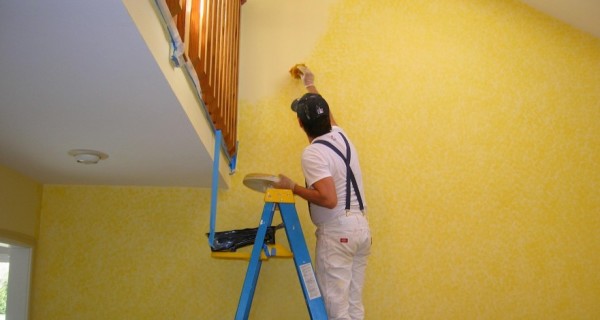
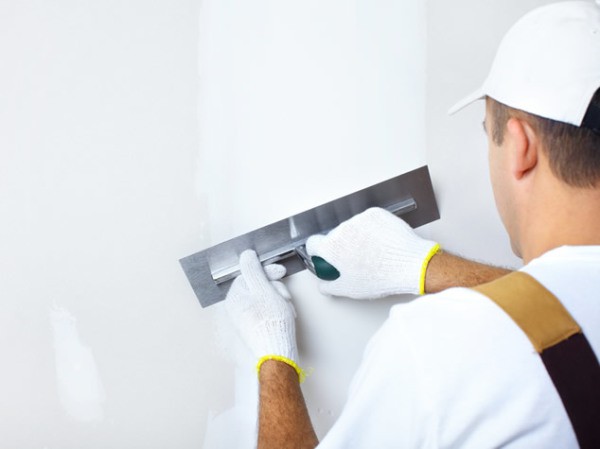



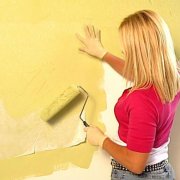
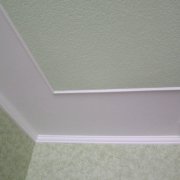
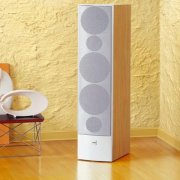
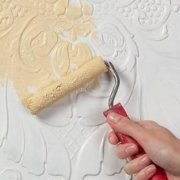
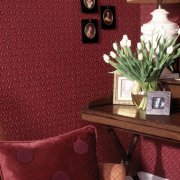
There can be problems in choosing colors, for example, a water emulsion ideal for the selected shade of the spectrum, I really know it for sure, they will pound right in the supermarket at the place of purchase, but with other types of paint on non-woven wallpaper they may not create the exact color, but offer use from the manufacturer standard in banks. At least it is necessary on the spot to inquire if the question becomes.